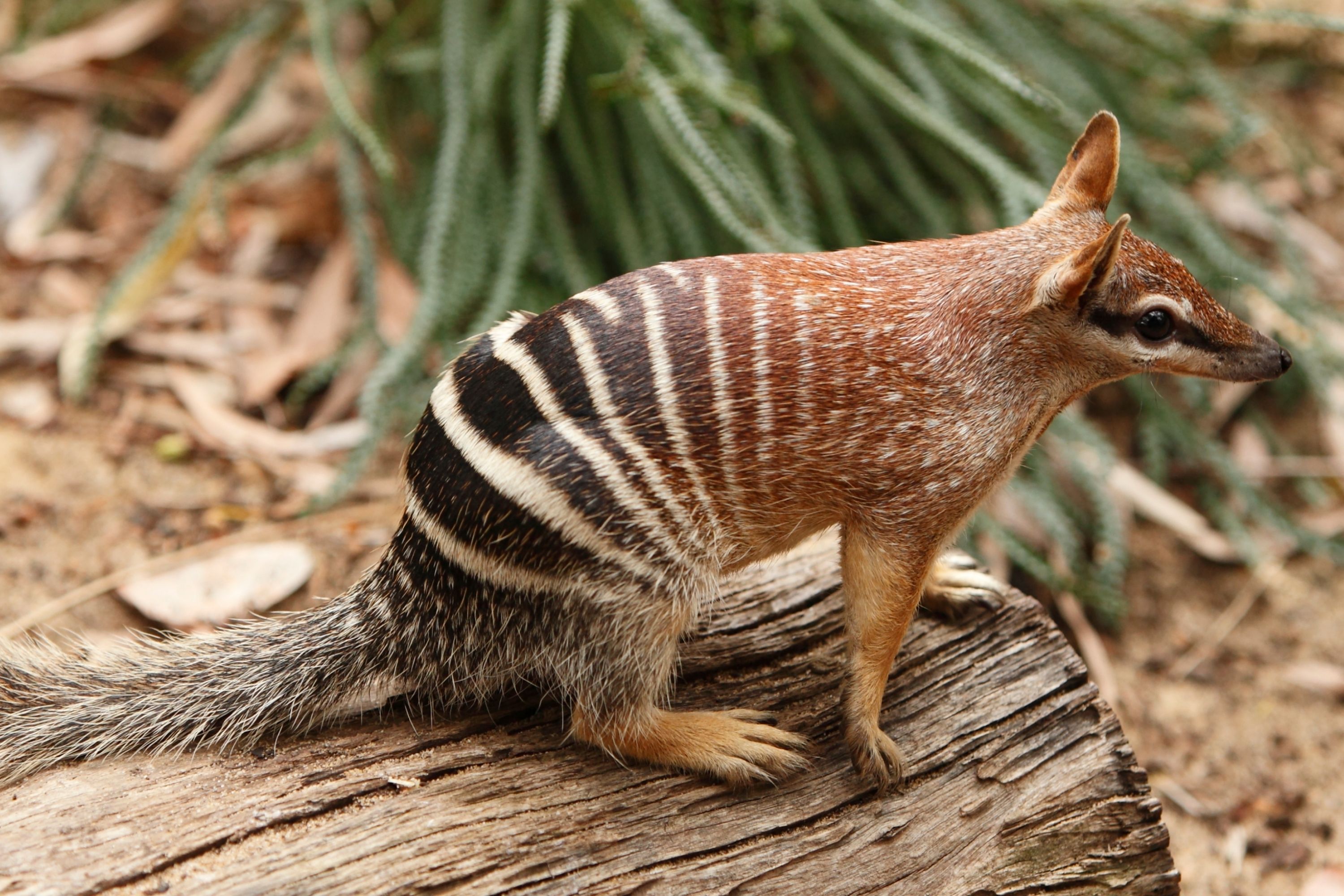Numbat
(Myrmecobius fasciatus)

Description
The numbat (Myrmecobius fasciatus), also known as the noombat or walpurti, is an insectivorous marsupial. It is diurnal and its diet consists almost exclusively of termites. The species was once widespread across southern Australia, but is now restricted to several small colonies in Western Australia. It is therefore considered an endangered species and protected by conservation programs. Numbats were recently re-introduced to fenced reserves in South Australia and New South Wales. The numbat is the faunal emblem of Western Australia. The numbat is a small, colourful creature between 35 and 45 centimetres (14 and 18 in) long, including the tail, with a finely pointed muzzle and a prominent, bushy tail about the same length as its body. Colour varies considerably, from soft grey to reddish-brown, often with an area of brick red on the upper back, and always with a conspicuous black stripe running from the tip of the muzzle through the eyes to the bases of the small, round-tipped ears. Between four and eleven white stripes cross the animal's hindquarters, which gradually become fainter towards the midback. The underside is cream or light grey, while the tail is covered with long, grey hair flecked with white. Weight varies between 280 and 700 g (9.9 and 24.7 oz). Unlike most other marsupials, the numbat is diurnal, largely because of the constraints of having a specialised diet without having the usual physical equipment for it. Most ecosystems with a generous supply of termites have a fairly large creature with powerful forelimbs bearing heavy claws. Numbats are not large, and they have five toes on the fore feet, and four on the hind feet. However, like other mammals that eat termites or ants, the numbat has a degenerate jaw with up to 50 very small, nonfunctional teeth, and although it is able to chew, rarely does so, because of the soft nature of its diet. Uniquely among terrestrial mammals, an additional cheek tooth is located between the premolars and molars; whether this represents a supernumerary molar tooth or a deciduous tooth retained into adult life is unclear. Numbats were formerly widely distributed across southern Australia, from Western Australia to north-western New South Wales. However, their range has significantly decreased since the arrival of Europeans, and the species has survived only in two small patches of land in the Dryandra Woodland and the Perup Nature Reserve, both in Western Australia.
Taxonomic tree:







